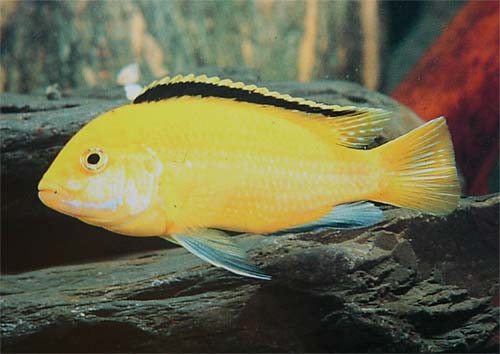(单词翻译:单击)
听力文本
This is Scientific American — 60-Second Science. I'm Jason Goldman.
Got a minute?
Hundreds of millions of years ago a humble fish swam in the lakes and rivers of the supercontinent Gondwana. Eventually Gondwana broke apart, becoming the continents we know today. And the descendants of that fish, now called cichlids, continue to swim the fresh waters of both Africa and South America.
Cichlids have some of the most incredible visual systems known. Humans have genes that code for three different types of visual pigments, called opsins. Cichlids have seven.
"But what is interesting within cichlids, which is this group of very diverse fishes, is that they can express different sets of these seven genes. So they only express three typically, but different species express different groups of these seven genes."
Biologist Daniel Escobar-Camacho, from the University of Maryland in College Park.
"So for example, we have opsin genes that code for the blue, green, and red opsin...whereas cichlids have genes that are sensitive to UV, violet, blue, blue-green, green, light green, and red."
But selection pressure has kept only some of those genes intact.
African cichlids, whose visual systems are well studied, evolved in fairly clear, calm, blue lakes with plenty of sunlight. And it was known that they've maintained the genes for seeing short wavelength light, at the blue end of the spectrum. But their South American counterparts live in the murky waters of the Amazon River basin, bathed mostly in reds and oranges.

Escobar-Camacho analyzed DNA from three different Amazonian cichlids: the freshwater Angelfish, the Discus, and the Oscar, all of which are also popular in home aquariums. He discovered that each species has completely lost at least one of the seven opsin genes, and some have even lost two. But they've each lost different genes.
"What is interesting is that they are expressing genes in the retina that allow them to be long wavelength-sensitive. And this is in concordance with the light environment in Amazon waters, because Amazon waters transmit long wavelengths best."
In other words, Amazonian cichlids were most sensitive to red and orange light, which makes sense because Amazonian rivers filter out most of the blues and greens. The results are in the journal Molecular Ecology.
The finding is consistent with an idea called the "sensitivity hypothesis," which holds that a color visual system evolves by adapting to the dominant wavelengths of light in the environment. In other words, what you get is what you see.
Thanks for the minute for Scientific American — 60-Second Science Science. I'm Jason Goldman.
参考译文
这里是科学美国人——60秒科学。我是杰森·古德曼。
有一分钟时间吗?
几亿年前,一条小鱼在冈瓦纳超级大陆的湖泊和河流里遨游。冈瓦纳古大陆最终解体,成为我们今天知道的大陆。而那条鱼的后代,现在被称为慈鲷科鱼类,则继续在非洲和南美洲的淡水中畅游着。
慈鲷科鱼类拥有一些最不可思议的视觉系统。人类有三种视色素基因编码,称为视蛋白。而慈鲷科鱼类有七种。
“而有趣的是,慈鲷科鱼类品种丰富,它们可以展现出七种基因的不同组合。一般它们也只展示出三种典型的基因,但不同的物种会展示出七种基因的不同排列组合。”
丹尼尔·埃科巴·卡马科是马里兰大学帕克分校的生物学家。
“举例来说,我们有编码蓝色、绿色和红色视蛋白的视蛋白基因,而慈鲷科鱼类有对紫外线、紫色、蓝色、蓝绿、绿色、浅绿和红色敏感的基因。”
但是选择压力使最后只有部分基因完整保留下来。
我们已经对非洲慈鲷的视觉系统进行了充分研究,它们生存进化的环境是清澈、安静且拥有充足阳光的蓝色湖面。我们知道它们保留了能识别短波长光的基因,在光谱中偏蓝端。而在昏暗潮湿的亚马逊河流域生活的南美慈鲷,大部分时间沐浴在红光和橙光中。
埃科巴·卡马科分析了三种亚马逊慈稠鱼的DNA:淡水神仙鱼、七彩神仙鱼和奥斯卡鱼,这三种鱼也是家庭水族箱中常见的品种。他发现,每种鱼都至少完全失去了七种视蛋白基因的其中一种,有些鱼甚至失去了两种基因。不过它们丢失的基因种类并不相同。
“有趣的是,它们在视网膜中表达基因,这使它们对长光长敏感。这与亚马逊流域的光环境是一致的,因为亚马逊流域传输的是长波长。”
换句话说,亚马逊慈稠鱼对红光和橙色光线最敏感,因为亚马逊河过滤掉了大部分蓝光和绿光,所以这可以说得通。该研究结果发表在《分子生态学》期刊上。
这一研究结果与一个名为“敏感度假说”的观点相符,即一种颜色视觉系统通过适应环境中的主导波长而进化。也就是说,所见即所得。
谢谢大家收听科学美国人——60秒科学。我是杰森·古德曼。
译文为可可英语翻译,未经授权请勿转载!
重点讲解
重点讲解:
1. be sensitive to 过敏的;易受影响的;敏感的;
例句:Photographic paper is highly sensitive to light.
感光纸对光十分敏感。
2. in other words 换言之;换句话说;也就是说;
例句:In other words, they should entrust employees to perform certain duties.
换句话说,他们应该放心让员工去执行某些任务。
3. make sense 可以理解;讲得通;
例句:This word doesn't make sense in this sentence.
句子中的这个词讲不通。
4. filter out 滤除;滤掉;
例句:Children should have glasses which filter out UV rays.
儿童应该戴上滤除紫外线的眼镜。
5. be consistent with (观点等)一致的,吻合的,不矛盾的;
例句:These actions are consistent with his principles.
这些行为与他的原则是一致的。


